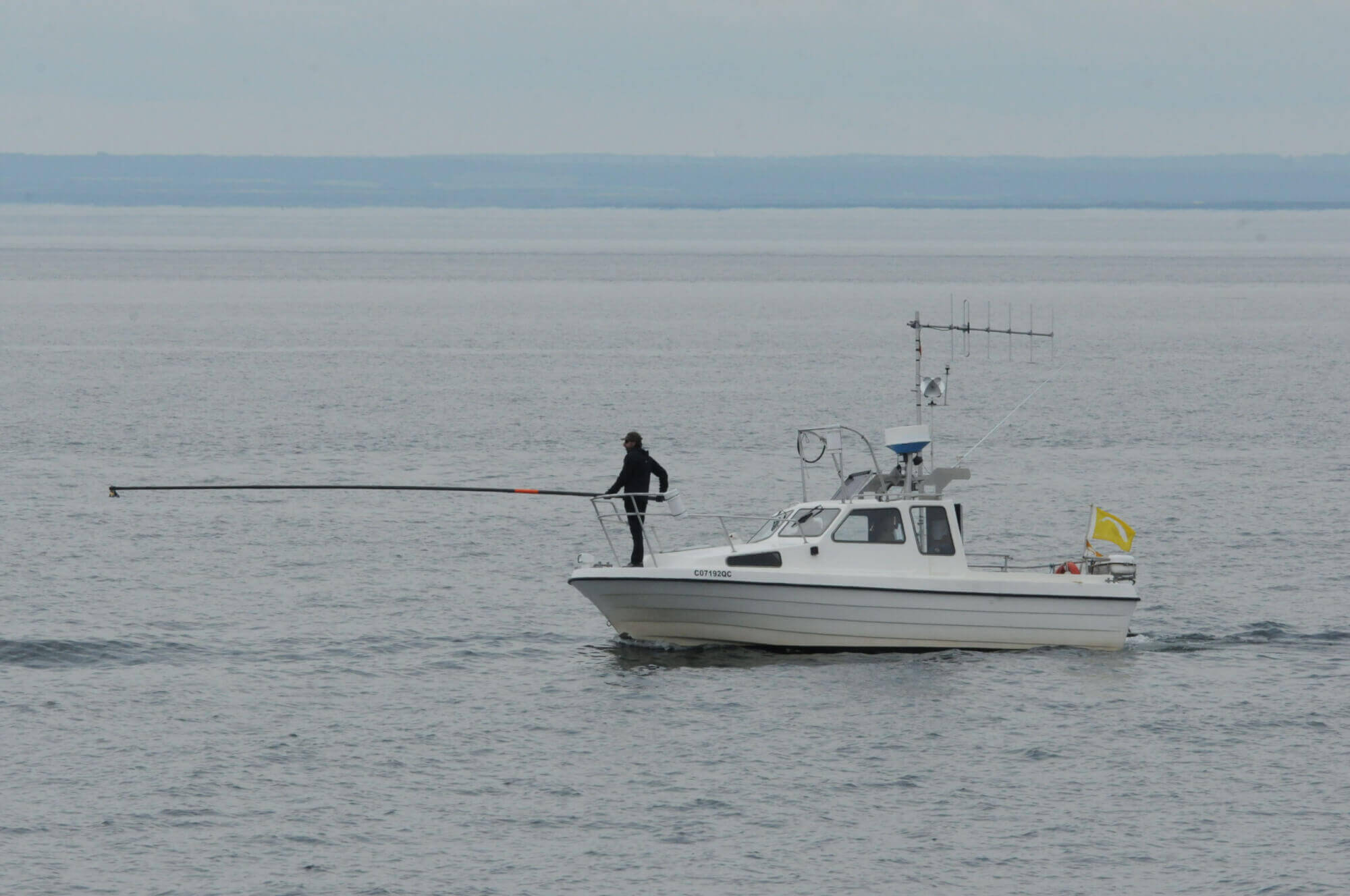GREMM Lead Technician Michel Moisan has a strong interest in electronics combined with a keen analytical talent to quickly identify solutions to a wide array of unforeseen circumstances. How would we describe Michel in a nutshell? Versatile, persevering and self-taught.
As agile at tagging a whale with the aid of a 4-metre-long pole as he is with the computer language Python, Michel has been a central figure of GREMM’s team for the past 25 years. His colleagues appreciate both his enthusiasm and his reliability, not to mention his excellent sense of humour. He doesn’t shy away from playing pranks on his colleagues, even when working remotely!
GREMM’s scientific director Robert Michaud invited Michel to join the team in 1995. He was working in the Bay of Fundy at the time. “His invariably good mood at work is both extraordinary and precious. Thanks to his skill set, he has boosted GREMM’s research capacity,” maintains Michaud. His wealth of experience and his knowledge of wildlife, in addition to mechanics and IT, make him a valuable asset for the team.
From start to finish, Michel is involved at every stage of the organization’s research projects.
“My job is to make sure we have a sound protocol. Robert and I work in close collaboration. We also work with our partners such as Fisheries and Oceans Canada and Parks Canada. I have to find the right measuring devices, propose suitable sampling techniques and plan the data post-processing,” he describes.
Constantly improving data collection
Michel has made a significant contribution to GREMM’s current data processing system. He recalls his early days with the organization. “When I first arrived, both large rorquals and belugas were photo-ID’d using film strips, photos and “Post-it” notes. When I saw that, I told them: If this place ever catches fire, you guys are screwed!” he recalls, laughing.
He also works on developing acoustic monitoring systems. “We set up experimental listening stations, and in 2020 we did another trial to set up a third. For 2021, there should be a total of four of them in place in the St. Lawrence,” he explains.
His colleagues are grateful for his ability to modify pre-existing tools to meet their needs. “Our entire photo processing system was designed by Michel. He also created and modified certain data archivers for use on whales and is a champion marksman when taking biopsies. He has his hand or his head in every one of GREMM’s projects,” mentions Timothée Perrero, a research assistant who works closely with Michel.
Sharing his expertise abroad
This cetacean enthusiast had the unusual opportunity to participate with GREMM in a research project in Russia. Over a two-year period, he spent several two-month stints in the country, where he trained technicians to study a population of belugas that inhabit Russian waters. He has also been involved in beluga research in Alaska every year since 2016, with the exception of 2020.
“We’re helping out with biopsy sampling. Alaska’s Cook Inlet is special; the water there is turbid. These belugas do not live in the same environment as those of the St. Lawrence. They have to adapt to high tides that exceed 10 metres,” he explains, expressing his admiration for these cetaceans.
Exploring a different living environment
What drives him most is working with the animals. He also takes pleasure in the level of precision required by research protocols. “Doing this work and encountering challenges and then coming up with design ideas is empowering. But I consider myself lucky, because I’m involved in the subsequent reflection and analysis of the research project,” he explains.
Residing in Tadoussac year-round, Michel leads a lifestyle that revolves around the friendly and dynamic ambiance that characterizes a small team. “I’ve worked in other organizations and really appreciate the flexibility we have here. We’re quick at coming up with ideas… we can decide to buy a tool as soon as it’s needed and off we go! I enjoy the latitude I have. Robert has a brainstorm that the team wants to run with and I find a way to make it happen,” he adds.
Studying whales comes with its own constraints, including their long life expectancies, which means that in the span of their careers, researchers cannot possibly fully grasp the results of their work. This doesn’t deter Michel, however.
“Whales have an aura; they are majestic. You see them on the surface, but there’s an entire universe below that you can’t see,” he says. His curiosity and his desire to push the boundaries make him an inspiring colleague for the rest of his team. Studying the whales of the St. Lawrence inspires him and his enthusiasm rubs off on his peers, so much so that they feel a strong attachment to him.
If you enjoyed this bio, you may also be interested in reading about photo-ID technician Marie-Hélène D’Arcy.










